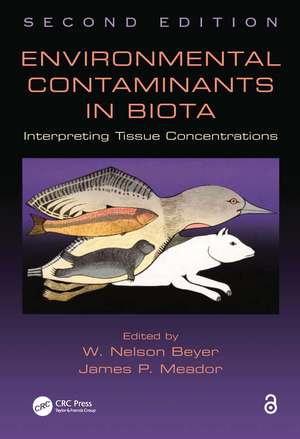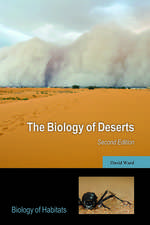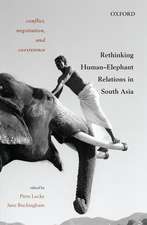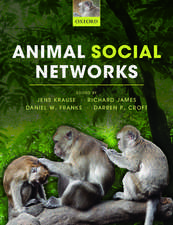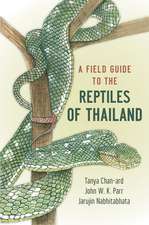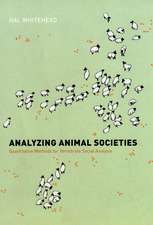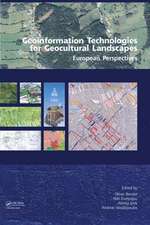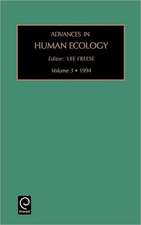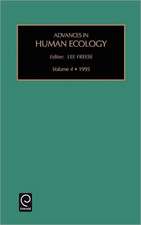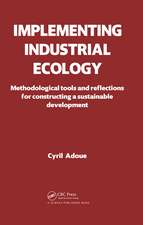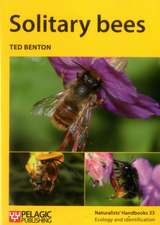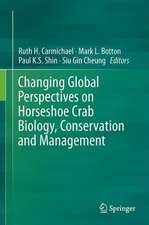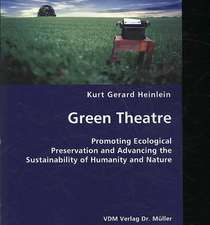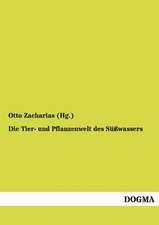Environmental Contaminants in Biota: Interpreting Tissue Concentrations, Second Edition
Editat de W. Nelson Beyer, James P. Meadoren Limba Engleză Hardback – 23 feb 2011
Offering guidance on the ecotoxicologically meaningful interpretation of tissue concentrations, Environmental Contaminants in Biota, Interpreting Tissue Concentrations, Second Edition is updated with current data and new ways of analyzing those data as well as additional contaminants not previously considered. Beginning with a history of wildlife toxicology and data interpretation, chapters cover a wide range of contaminants and their hazardous and lethal concentrations in various animals including DDT, Dioxins, PCBs, and PBDEs in aquatic organisms; methylmurcury, selenium, and trace metals in fishes and aquatic invertebrates; and pharmaceuticals and organic contaminants in marine mammals. The book considers the impact of Polychlorinated Biphenyls, Dibenzo-p-Dioxins and Dibenzofurans, and Polybrominated Diphenyl Ethers; cyclodiene; and other organochlorine pesticides in birds and mammals. Later chapters examine the effects and analysis of lead, cadmium, and radionuclides in biota.
With thousands of published research papers reporting tissue concentrations each year, Environmental Contaminants in Biota, Interpreting Tissue Concentrations, Second Edition gives ecotoxicologists the ability to draw actionable value regarding the toxicological consequences of those concentrations and relate tissue concentrations quantitatively to injury: the core of ecotoxicology.
Preț: 1308.84 lei
Preț vechi: 1596.14 lei
-18% Nou
Puncte Express: 1963
Preț estimativ în valută:
250.47€ • 259.91$ • 209.35£
250.47€ • 259.91$ • 209.35£
Carte tipărită la comandă
Livrare economică 15-29 martie
Preluare comenzi: 021 569.72.76
Specificații
ISBN-13: 9781420084054
ISBN-10: 1420084054
Pagini: 768
Ilustrații: 80 b/w images and 100 tables
Dimensiuni: 178 x 254 x 41 mm
Greutate: 1.5 kg
Ediția:Revizuită
Editura: CRC Press
Colecția CRC Press
Locul publicării:Boca Raton, United States
ISBN-10: 1420084054
Pagini: 768
Ilustrații: 80 b/w images and 100 tables
Dimensiuni: 178 x 254 x 41 mm
Greutate: 1.5 kg
Ediția:Revizuită
Editura: CRC Press
Colecția CRC Press
Locul publicării:Boca Raton, United States
Public țintă
Academic, Professional, and Professional ReferenceCuprins
DDT and Other Organohalogen Pesticides in Aquatic Organisms. Dioxins, PCBs, and PBDEs in Aquatic Organisms. Methylmercury in Freshwater Fish: Recent Advances in Assessing Toxicity of Environmentally Relevant Exposures . Selenium Accumulation and Toxicity in Freshwater Fishes, . Trace Metals in Aquatic Invertebrates. Organotins in Aquatic Biota: Occurrence in Tissue and Toxicological Significance. Active Pharmaceutical Ingredients and Aquatic Organisms. Organic Contaminants in Marine Mammals: Concepts in Exposure, Toxicity, and Management. Select Elements and Potential Adverse Effects in Cetaceans and Pinnipeds. Toxicological Significance of Pesticide Residues in Aquatic Animals. DDT, DDD, and DDE in Birds. Cyclodiene and Other Organochlorine Pesticides in Birds. Effects of in Wild Birds. Toxicological Implications of PCBs, PCDDs, and PCDFs in Mammals. Lead in Birds. Lead in Mammals. Mercury in Nonmarine Birds and Mammals. Cadmium in Small Mammals. Cadmium in Birds. Selenium in Birds. Radionuclides in Biota
Notă biografică
Dr. W. Nelson Beyer is an ecotoxicologist at the Patuxent Wildlife Research Center, in the U.S. Geological Survey. He earned a doctorate in terrestrial ecology from Cornell University in 1976, studying the natural history of slugs, and remains curious about all manner of living things. With help from colleagues in the U.S. Fish and Wildlife Service, he has examined contaminated sites, studying phytotoxic injury to the chestnut oak forest adjacent to the Palmerton zinc smelters in Pennsylvania, lead poisoning of swans and other waterfowl in the Coeur d’Alene River Basin in Idaho, and zinc poisoning of wild birds at the Tri-State Mining District in Oklahoma, Kansas, and Missouri. Many of his studies have documented the movement of environmental contaminants from soil and sediments into wildlife and through food chains, often showing how ingestion of soil or sediment is the most important route of exposure of lead and related metals to wildlife. Recently he has turned his eye toward sediment ingestion by bottom-feeding fish. He believes in using tissue residues as a means to emphasize injury to animals, basic to wildlife toxicology. His work is usually conducted to support Natural Resource Damage Assessments. He balances his down-to-earth approach to wildlife toxicology, however, with an inordinate fondness for clouds. His daily cycling inspires him, and his wife, Mary, keeps his laboratory running. Dr. James P. Meador is an environmental toxicologist with the National Marine Fisheries Service in Seattle, WA, U.S., which is part of the National Oceanic and Atmospheric Administration (NOAA). Jim has a Ph.D. in aquatic toxicology from the University of Washington and has more than 30 years experience in the field. He has been with NOAA for 20 years and has previously worked at the Scripps Institution of Oceanography and the Naval Oceans Systems Center in San Diego. For many years he has studied the environmental factors that control the bioavailability of contaminants and their role in bioaccumulation with the goal of developing relationships for predicting tissue concentrations, especially for aquatic species in the field. This work was supplemented with toxicokinetic studies that are useful for predicting bioaccumulation and highlighting species-specific differences in toxic responses. Gradually, these studies evolved to include analysis of toxic effects as a function of bioaccumulated tissue concentrations. In 2007, Jim organized and chaired a Pellston workshop, sponsored by the Society of Environmental Toxicology and Chemistry, to review the tissue residue approach for toxicity assessment. His current research is focused on alterations to growth and energetics in fish resulting from low-dose exposure to a variety of environmental contaminants. Jim has been married for 30 years to Susan, a recently retired NOAA statistician, who keeps him busy in the garden and serves as his buddy on their tropical-therapy SCUBA diving trips. He is also an avid bicycle rider/commuter and logs far more miles on his bike than on his car.
Descriere
Discussing the interpretation of tissue concentrations of contaminants in wildlife, this updated edition of a bestseller draws on current scientific research and includes new chapters and greater emphasis on aquatic organisms. Each chapter provides a summary and review of a specific chemical along with direction on research methods and the interpretation of conflicting or insufficient data. Chapters include a comprehensive history of contaminant interpretation in wildlife and fish, the use of tissue residues in ecological risk assessment, and detailed coverage of all bioaccumulative contaminants and their physiologic affects.
